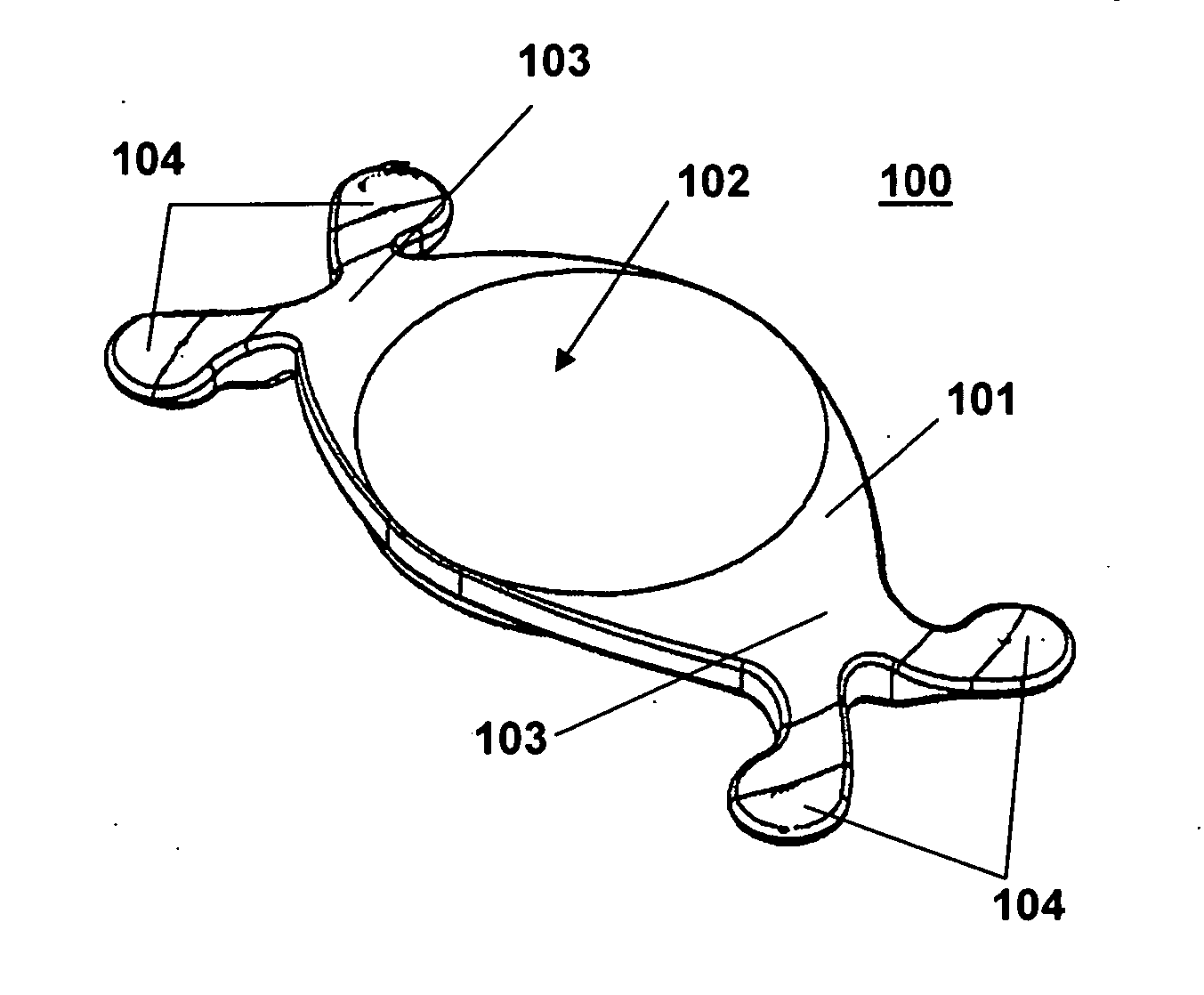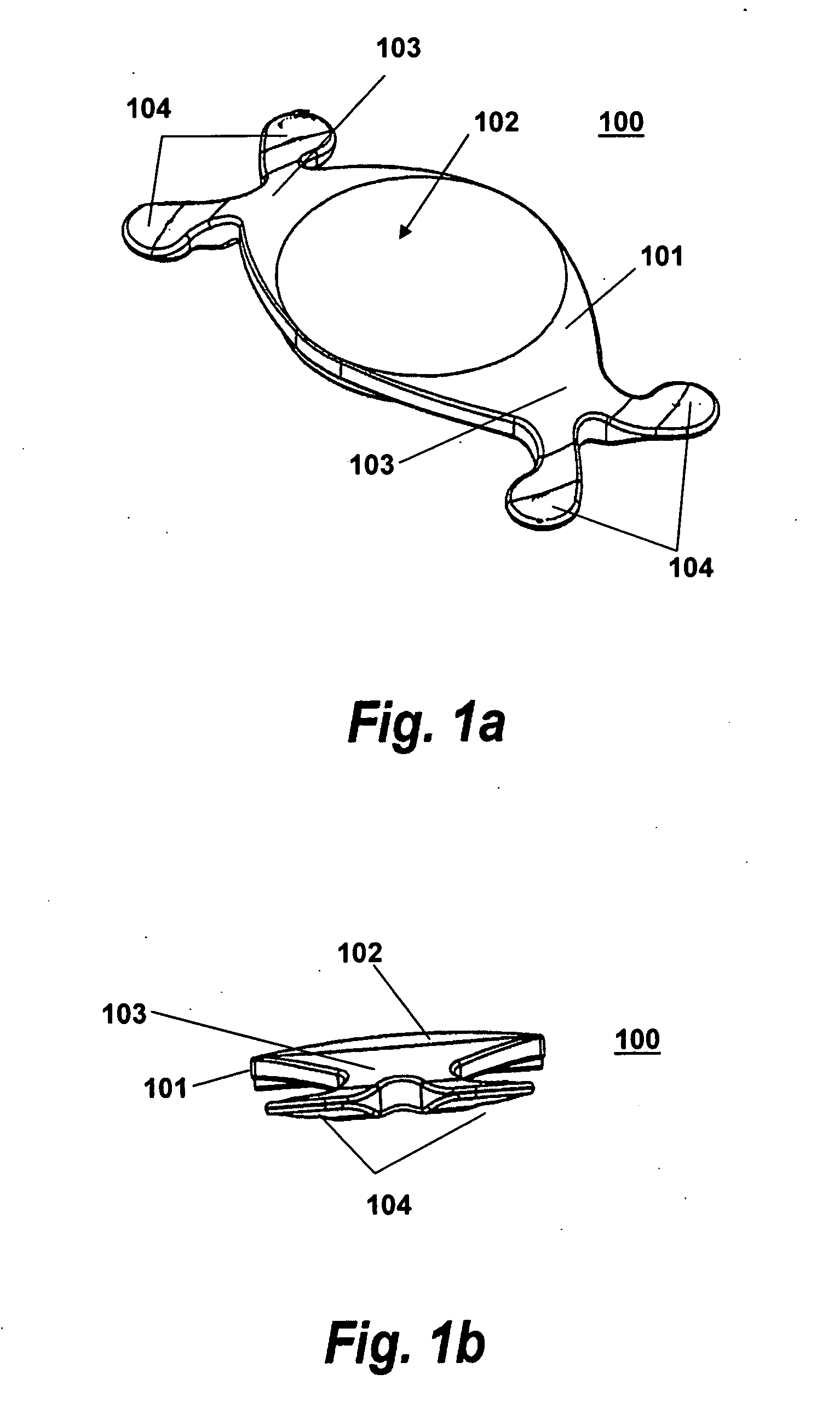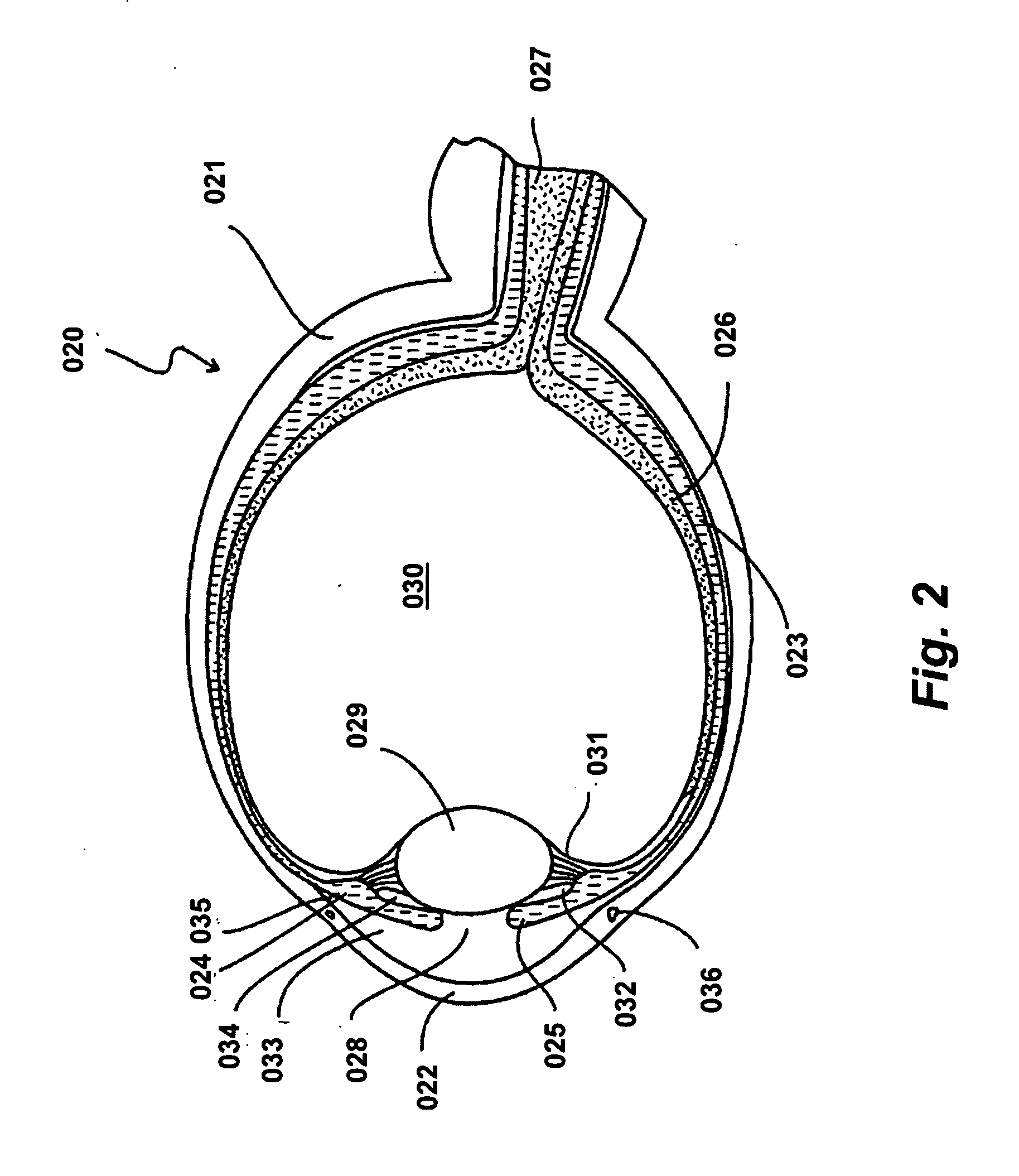Foldable intraocular lens with adaptable haptics
a technology of intraocular lens and haptics, which is applied in the field of foldable intraocular lens implants, can solve the problems of difficult installation, glare and other distortions, and the size of the corneal incision
- Summary
- Abstract
- Description
- Claims
- Application Information
AI Technical Summary
Benefits of technology
Problems solved by technology
Method used
Image
Examples
example 1
Phakic Intraocular Lens (IOL) Implantation and Explantation
[0076] A foldable phakic IOL is implanted using an injector that introduces the IOL through a clear corneal incision of less than 3 mm. The implantation technique for this lens is similar to that used for a pseudophakic IOL after cataract extraction. Preopertively, topically instilled pilocarpine 1% is administered to create a miotic pupil. The surgeon leads the phakic IOL into the lubricated injector cartridge, creates a sideport incision, and injects a viscoelastic agent into the anterior chamber. The IOL is then injected. The surgeon engages the inferior haptics of the IOL into the inferior angle before removing the cartridge tip from the anterior chamber. Bimanual irrigation / aspiration (I / A) removes all viscoelastic from the anterior chamber, and the surgeon uses the I / A instruments to adjust the position of the lens, if necessary. The anterior chamber is inflated to a normal pressure with BSS (Alcon Laboratories, Inc. ...
PUM
 Login to View More
Login to View More Abstract
Description
Claims
Application Information
 Login to View More
Login to View More - R&D
- Intellectual Property
- Life Sciences
- Materials
- Tech Scout
- Unparalleled Data Quality
- Higher Quality Content
- 60% Fewer Hallucinations
Browse by: Latest US Patents, China's latest patents, Technical Efficacy Thesaurus, Application Domain, Technology Topic, Popular Technical Reports.
© 2025 PatSnap. All rights reserved.Legal|Privacy policy|Modern Slavery Act Transparency Statement|Sitemap|About US| Contact US: help@patsnap.com



